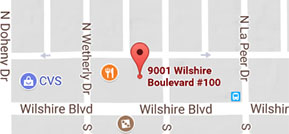Glaucoma Surgery
iStent
The iStent Trabecular Micro-Bypass stent is a new surgical therapy for glaucoma that is designed to improve aqueous outflow to safely lower IOP and may reduce medication burden; but this will be at the discretion of your physician.
iStent is the smallest medical device ever approved by the FDA and is placed in your eye during cataract surgery. It is so small, you won’t be able to see or feel it after surgery but it will be continuously working to help reduce your eye pressure.
How can iStent help me?
Every day, you are probably taking one or more eye drops to control your eye pressure. By improving the outflow of fluid from your eyes, iStent works to help control your eye pressure. After implantation of iStent, many patients are able to control their eye pressure.
Controlling eye pressure is extremely important to reduce the risk for vision loss due to glaucoma. If you forget to take your eye drops or ‘skip a dose’, this can cause large changes in your eye pressure. Large changes in eye pressure can increases the risk for vision loss.
If you have both glaucoma and cataracts, ask your eye doctor if iStent is right for you.
SLT Laser
One form of treating glaucoma is with Selective Laser Trabeculoplasty, or SLT. The SLT procedure works to treat glaucoma by reducing pressure of the eye with use of a safe and painless laser procedure. The results of the surgery can be so effective, that when combined with regular glaucoma medication, can treat glaucoma or even sometimes replace the need for medication all together.
Selective Laser Trabeculoplasty is incredibly safe, and is not associated with any systemic side effects. Common, mild side effects include inflammation, temporary increase in eye pressure, eye pain, or inflammation of the conjunctiva, the clear membrane that covers the white part of the eye. SLT naturally increases your eye’s outflow of fluid, thus reducing the pressure.
What may be the most beneficial part of using SLT to treat glaucoma is that the process uses selective photothermolysis, which is to say that it only targets cells with melanin, leaving the surrounding tissue completely untouched, unharmed, and intact. Since these other cells are not damaged, your body’s own healing process will recognize the reconstructed cells and begin to heal them naturally.
The process is incredibly quick and takes just minutes to complete, once the eye has been numbed with eye drops. There is no pain at all in the procedure, though many people see flashes of light and do experience some redness in or around the eye. Since the surgery is noninvasive and requires no anesthesia, patients can drive themselves home once the surgery is complete. A follow-up appointment is necessary, however, to evaluate your eye health and the results of the treatment.
YAG PI Laser
The YAG PI (peripheral iridotomy) laser is the most common option for treating patients with narrow angle anatomy and the more serious angle closure glaucoma attack. It is important that people who think they are experiencing symptoms of a closed-angle glaucoma attack seek treatment immediately, as closed-angle glaucoma is extremely fast progressing. These symptoms include pain in or behind the eye ball, and headache with nausea, vomiting, and visual disturbances with halos around light
The procedure is very quick, usually lasting a few seconds to a couple of minutes. There is no dilatation or local anesthesia, so patients will be able to drive themselves home after the procedure is over. Patients can return to their normal activities immediately, but will need to return to the eye surgeon for a follow-up evaluation and will need to use steroid drops from a week to ten days. In addition to stopping the process of closed-angle glaucoma, YAG PI can sometimes result in decreased intraocular pressure. This result is not guaranteed, but can sometimes be an added benefit. The procedure is incredibly effective, and usually does not need to be performed again for the duration of the patient’s life.
Trabeculectomy
The most common surgical way to treat glaucoma is with a trabeculectomy, a surgical procedure that relieves pressure by creating an outflow of the fluid from inside to outside of the eye. Reducing the pressure in the eye, stops or significantly reduces optic nerve damage from glaucoma, and help to prevent vision loss. This procedure is performed for patients who do not respond to medical or laser therapies for glaucoma any longer. The procedure is usually performed under anesthesia, with the patient conscious but sedated.
Before the trabeculectomy surgery, patients are instructed use antibiotics and anti-inflammatory eye drops. These drops are administered several times a day before the surgery begins to prepare the eye for surgery and to prevent any infection from occurring. While anesthesia wears off after the procedure, the eyes are covered. Patients are instructed not to rub the eye, and to shield the eye from bright lights. If pain occurs, patients should be instructed to call their surgeon immediately.
Tube Shunt Procedures
One way to alleviate pressure of the liquid in the eye that is associated with glaucoma is to have tube shunts implanted directly into the eye. This allows for alternative drainage in the eye, so that fluid does not build up and cause pressure. Tube shunts are more invasive than regular laser surgery, and thus are only recommended for patients whose glaucoma is not controlled by medications and/or laser eye treatments. Often times tube shunts are implanted after a failed laser glaucoma eye surgery.
The tube shunt implantation procedure is conducted under local anesthesia. Unlike many other eye surgeries, the patients do not remain even slightly conscious during the procedure. Sedation is given continuously through an IV, and you will need a friend or family member to drive you home following the surgery. You will be instructed to wear a patch for several days, until your first post-operative exam.




